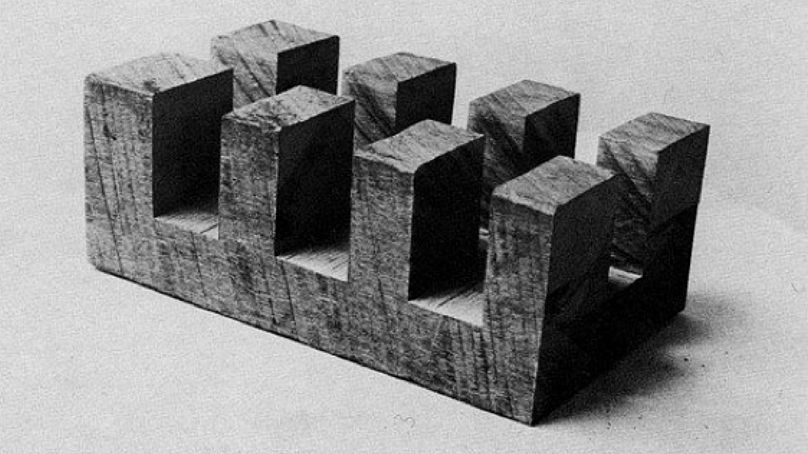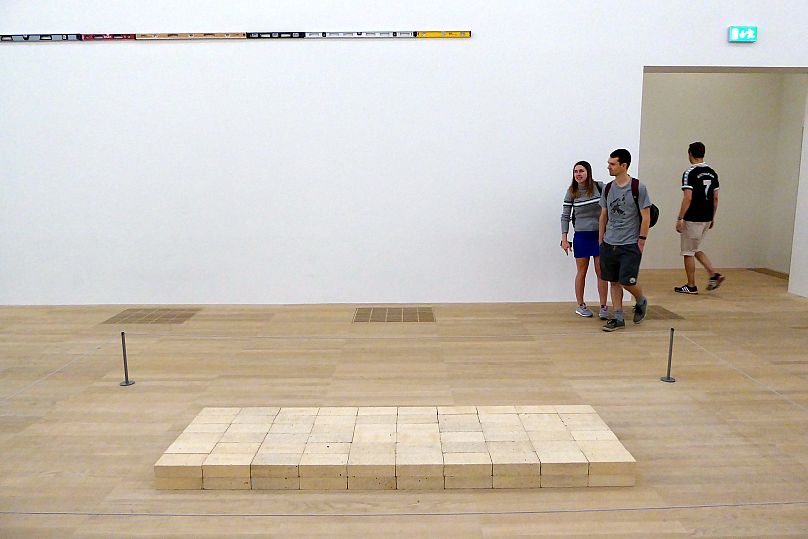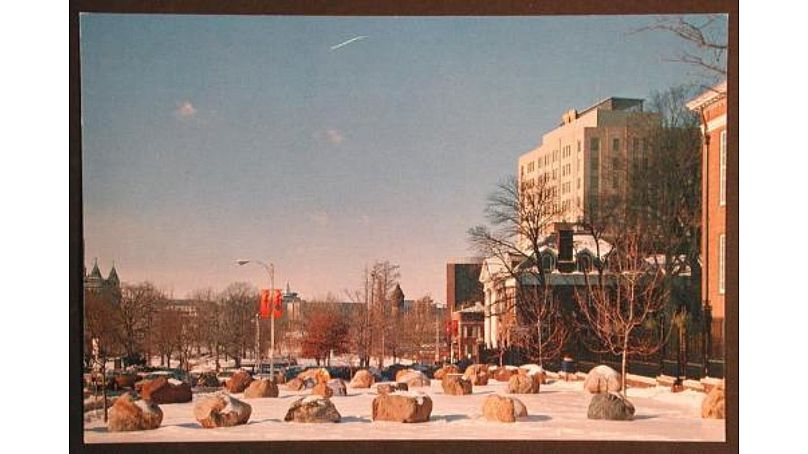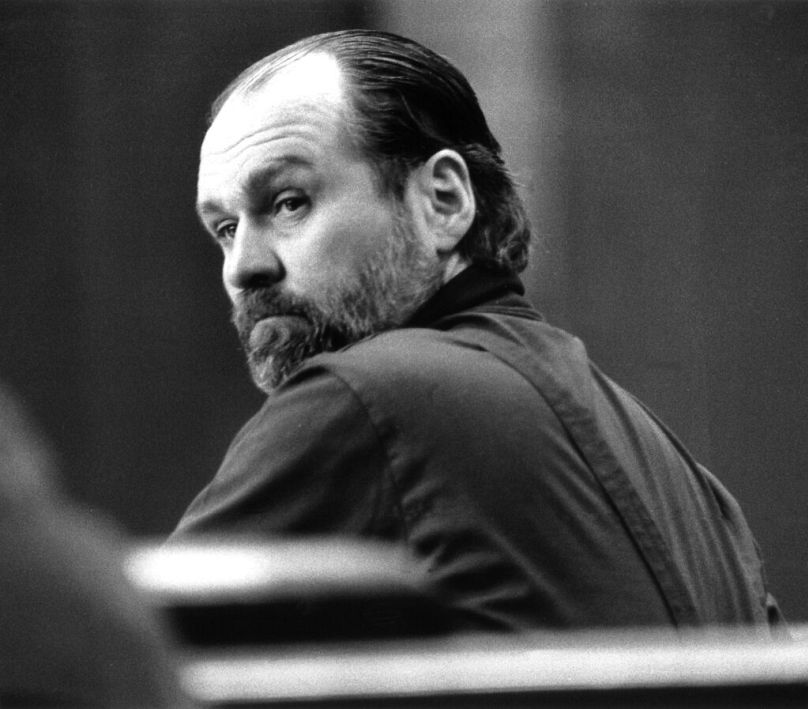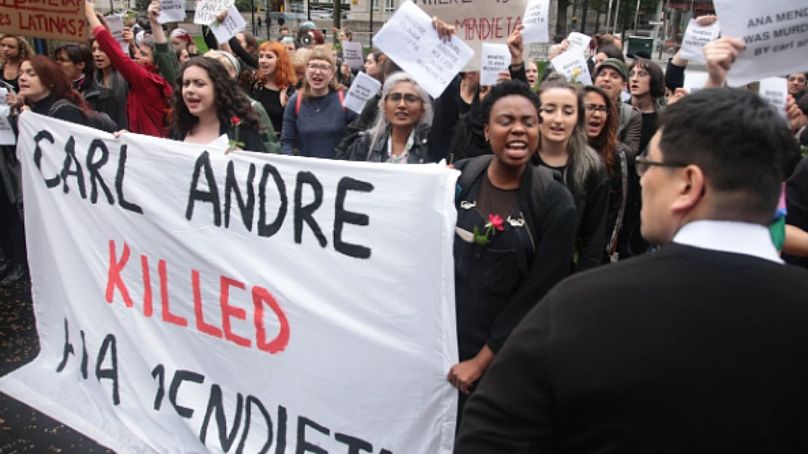Andre, who was accused of killing his wife Ana Mendieta in 1985, was an early pioneer of the Minimalist art movement, reducing sculpture to its most simple form.
Carl Andre, an American minimalist artist, renowned for his groundbreaking approach to sculpture, has died aged 88.
Born in Massachusetts in 1935, Andre was a trailblazer among the Minimalists, a collective of artists who, in the early 1960s, reduced sculpture to its essential components by creating forms from industrial materials devoid of emotional connection.
“Carl Andre redefined the parameters of sculpture and poetry through his use of unaltered industrial materials and innovative approach to language,” shared Andre's longtime New York representative the Paula Cooper Gallery.
The statement adds: “He created over two thousand sculptures and an equal number of poems throughout his almost seventy-year career, guided by a commitment to pure matter in lucid geometric arrangements.”
But for many, Andre's artistic achievements are tough to admire, due to accusations of murdering his third wife, Ana Mendieta, who fell from his apartment window in 1985.
Despite Andre's acquittal in 1988, protests consistently follow his exhibitions.
Andre said that his creations were "close to zero," emphasising their non-representational nature and intentional lack of emotional impact.
He played a vital role in steering art towards a more conceptual trajectory, shifting away from the visual realm and into the realm of ideas.
After serving in the U.S. Army, Andre moved to New York City in 1956, where he reconnected with former classmates, including artist Frank Stella, from his time studying art at Phillips Academy in Massachusetts.
While sharing a studio with Stella, Andre developed a series of wooden "cut" sculptures, including Radial Arm Saw cut sculpture (1959) and Maple Spindle Exercise (1959).
During the period of 1960 to 1964, Andre worked as a freight brakeman and conductor for the Pennsylvania Railroad in New Jersey, which profoundly influenced his later sculptures and choice of attire (often wearing overalls and a blue shirt even at formal events).
In 1965, Andre had his first public exhibition at the Tibor de Nagy Gallery in the Shape and Structure show curated by Henry Geldzahler. His work gained further recognition in the late 1960s when German entrepreneur Karl Ströher acquired three major pieces for the Museum für Moderne Kunst Frankfurt.
Throughout his career, Andre's sculptures ranged from large public artworks like Stone Field Sculpture (1977) in Hartford, Connecticut, to intimate pieces such as Satier: Zinc on Steel (1989).
His creations can currently be found in the collections of numerous global museums, including the Museum of Modern Art in New York and the National Gallery of Art in Washington D.C. to Paris's Centre Pompidou and London's Tate Modern.
In 1985, his third wife, the Cuban-American "earth-body" artist Ana Mendieta, died after falling from Andre's 34th story apartment window, following a heated argument between the couple.
The neighbouring couple next door reportedly heard Mendieta scream "No" on that same night, and Andre was seen with multiple scratches on his face afterwards.
In the 911 call to the police, Andre said they "had a quarrel about the fact that I was more, eh, exposed to the public than she was. And she went to the bedroom, and I went after her, and she went out the window."
The night of Mendieta's death, Andre was charged with second-degree murder. He opted for a jury-less trial and was eventually acquitted of all charges in 1988.
Despite the legal outcome, Andre remained a controversial figure, facing protests at museum exhibitions from Mendieta's supporters, as seen in 2016 when the Tate Modern added more of Andre's works to their collection.












